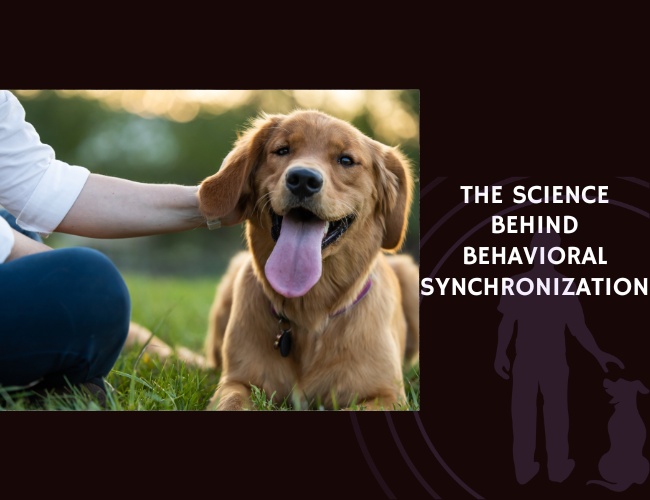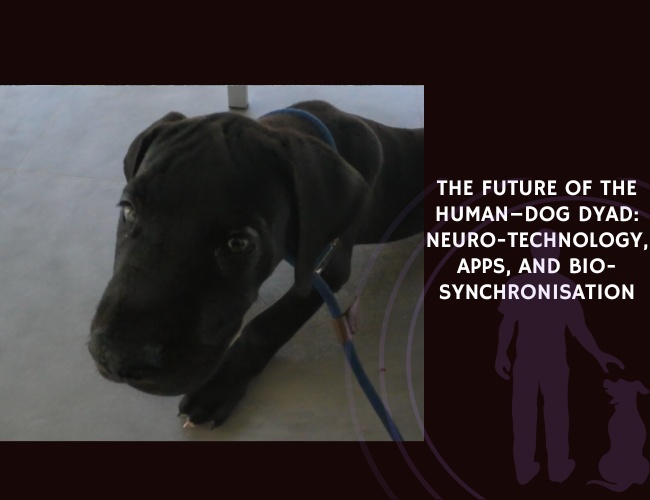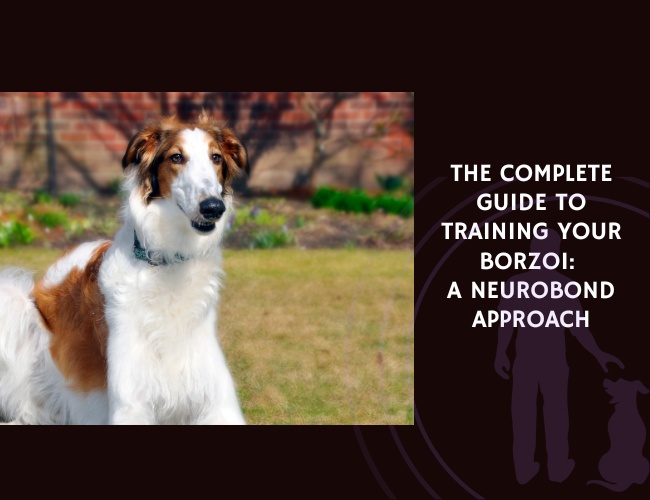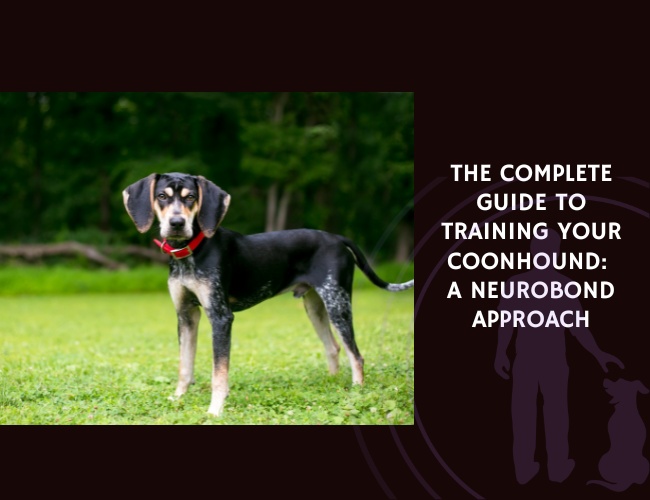Understanding Behavioral Synchronization
Definition of Behavioral Synchronization in Dogs and Humans
Behavioral synchronization refers to the phenomenon where individuals align their actions and movements in time with each other. In the context of dogs and humans, it encompasses activities such as walking in tandem, mirroring postures, and even synchronizing emotional states. This natural harmony allows dogs and their owners to perform coordinated behaviors and understand each other better.
Evolutionary Significance of Synchronized Behavior
From an evolutionary standpoint, behavioral synchronization has played a crucial role in the survival and cooperation between species. For early humans, working together harmoniously with dogs made hunting, guarding, and herding tasks more efficient. This collaboration was mutually beneficial, leading to a strong human-canine bond. The ability to synchronize behaviors likely provided an evolutionary advantage by enhancing communication and cooperation, essential for both survival and social bonding.
Comparison to Human-Human Synchronization Patterns
Interestingly, behavioral synchronization between dogs and humans bears similarities to human-human synchronization. Whether it’s a parent and child or two friends, people naturally synchronize their behaviors to enhance social cohesion and communication. The remarkable part is that dogs have adapted to synchronize with humans in much the same way. This ability to synchronize with a different species underscores the unique bond between dogs and humans, setting it apart from other forms of interspecies relationships.
The evolutionary mechanisms behind this synchronization might involve factors like empathy, social learning, and attunement to each other’s needs and cues. Just as synchronized movements in humans can enhance group dynamics and cooperation, the same principle applies to the human-dog relationship.
As we delve deeper into understanding how breed characteristics and the human-dog relationship impact synchronization, we will uncover more about what makes this connection so unique and powerful.
The Role of Breed Characteristics
Dogs come in a wide variety of breeds, each with its own unique temperament and characteristics. These breed-specific traits can significantly influence their ability to synchronize behavior with humans. Understanding how different breeds align with human actions sheds light on their innate and learned synchronization abilities. In this chapter, we’ll explore how breed temperaments, working breeds, and genetic predispositions affect synchronization.
How Different Breed Temperaments Affect Synchronization Abilities
Each breed has a different temperament, which can impact its capacity for synchronized behavior. For instance:
- Labrador Retrievers are known for their friendly, outgoing nature. Their sociable disposition makes them highly responsive to human cues, enhancing their synchronization abilities.
- German Shepherds have a reputation for loyalty and intelligence. Their keen sense of duty and alertness means they can closely mimic their owner’s actions, providing protective synchronization.
- Bulldogs, with their calm and courageous temperament, may appear less responsive initially. However, their strong bonds with owners allow for deep, contextual synchronization over time.
These temperament traits dictate how quickly and to what extent a dog can learn to mirror human behavior. Some breeds, like the agile Border Collie, excel due to their high energy and need for engagement, while others might exhibit a slower but equally strong bonding process.
Working Breeds and Their Enhanced Synchronization Capabilities
Working breeds, such as those used in herding, guarding, or assisting roles, display enhanced synchronization capabilities developed through years of selective breeding and specialized training.
- Herding Breeds: Dogs like the Border Collie and Australian Shepherd are prime examples. Their job necessitates acute attention to the handler’s commands and movements, instilling an advanced level of synchronous behavior.
- Guarding Breeds: Doberman Pinschers and Rottweilers fall into this category. Their protective instincts are closely tied to their owner’s signals; they need to anticipate and act in unison to potential threats.
- Assistance Breeds: Golden Retrievers and Labrador Retrievers are often trained as service dogs. Their ability to understand and follow complex commands makes them exceptionally adept at synchronization, crucial for assisting individuals with disabilities.
Such breeds have been honed through generations to refine their response to human signals, focusing on efficiency and accuracy. This historical selection intensifies their natural alignment with human behaviors, making them superior at synchronized tasks.
Genetic Predisposition to Human-Dog Bonding
Beyond specific training, intrinsic genetic factors play a vital role in a dog’s synchronization with humans. Selective breeding over centuries has enhanced certain traits advantageous for human companionship and cooperation.
- Oxytocin Receptors: Studies have found that breeds with higher levels of oxytocin (the bonding hormone) receptors are more likely to form strong connections with their human partners. For instance, the warm and affectionate nature of Cavalier King Charles Spaniels can be partly attributed to this genetic predisposition.
- Cognitive Abilities: Breeds like Poodles and Border Collies are renowned for their intelligence. They possess sophisticated problem-solving abilities and memory recall that facilitate better cooperation and synchronous activity.
- Temperament Selection: Over the years, characteristics such as tameness, friendliness, and attentiveness have been favored in many breeds. This selection has resulted in dogs that are inherently more attuned to human emotions and actions.
This genetic inclination underscores the importance of considering breed-specific traits when looking to enhance synchronization with your canine companion.
Understanding these breed characteristics can help tailor training and interactions to foster better connection and coordination with your dog. Whether it’s through recognizing the natural tendencies of specific breeds or leveraging their working capabilities, these insights pave the way for stronger, more harmonious relationships.
Let’s delve deeper into how our daily interactions and training influence these synchronized behaviors, highlighting the importance of positive reinforcement and dedicated bonding activities in the subsequent chapters.
The Impact of Human-Dog Relationships
One of the remarkable aspects of the human-dog relationship is its profound impact on behavioral synchronization. This chapter delves into the influence of training and socialization, the effects of daily interactions, and the role of positive reinforcement in enhancing synchronized behaviors between humans and dogs.
Influence of Training and Socialization on Synchronization
Training and socialization are essential components in fostering synchronization between a dog and its owner. From a young age, dogs exhibit a remarkable ability to learn and adapt to human cues. Socialization, particularly during a puppy’s critical developmental stages, ensures that they are comfortable and responsive to their environment and people.
Proper training techniques create structured interaction patterns, helping dogs anticipate and mirror their owner’s behavior effectively. For instance:
- Obedience Training: Commands such as sit, stay, and fetch instill discipline and predictable behavior that aligns with human expectations.
- Clicker Training: This method uses a clicker to signal desired behavior, which gradually leads to synchronized tasks.
Structured training and socialization not only encourage dogs to follow commands but also enhance their ability to read and respond to human body language and emotional cues.
Effect of Daily Interactions and Bonding Activities
Daily interactions serve as the foundation for a strong and synchronized human-dog bond. Consistent routines create a sense of security, enabling dogs to predict and align their behaviors with daily patterns. Here are a few ways daily interactions play a role:
- Consistent Routines: Establishing fixed times for feeding, walking, and play helps dogs anticipate activities, resulting in synchronized routines.
- Playtime and Exercise: Engaging in playful activities like fetch, tug-of-war, or jogging fosters coordination and mutual enjoyment, strengthening the bond.
- Communication and Cues: Regular verbal and non-verbal communication, such as gestures and tone of voice, help dogs learn and reflect human actions.
These interactions go beyond physical activities, as they foster emotional connections, contributing significantly to synchronized behaviors.
Role of Positive Reinforcement in Strengthening Synchronized Behaviors
Positive reinforcement is a powerful tool in encouraging desired behaviors and enhancing synchronization. By rewarding good behavior with treats, praise, or affection, owners reinforce the actions they want their dogs to repeat. Here’s how it works:
- Reinforcing Good Behavior: Rewarding actions like sitting calmly, coming when called, or walking without pulling on the leash encourages dogs to repeat those behaviors.
- Building Trust: Positive reinforcement builds a trusting relationship, making dogs more eager to please and align their behavior with their owners.
- Encouraging Learning: Dogs learn to associate positive outcomes with specific actions, making them more responsive to cues and commands.
Positive reinforcement is not merely about training but about fostering a cooperative and understanding relationship.
Exploring the depths of the human-dog relationship reveals the crucial impact of training, daily interactions, and positive reinforcement in building a synchronized partnership. The mutual bond of trust and understanding established through these practices forms the foundation for an enriching and harmonious companionship with your furry friend.
Emotional Connection and Mirroring
Emotional connections between dogs and their owners play a vital role in behavioral synchronization. Dogs are highly perceptive and can pick up on subtle cues to understand our emotional states. Remarkably, this connection is much deeper than simple observation; it involves real-time biological and emotional exchanges that strengthen the bond between humans and their canine companions.
How Dogs Detect and Respond to Human Emotional States
Dogs have evolved to become finely attuned to human emotions. They are capable of reading facial expressions, body language, and even vocal tones to gauge our moods. For instance, a study revealed that dogs can distinguish between happy and angry facial expressions in humans. When their owners are happy, dogs tend to exhibit playful and relaxed behaviors. Conversely, if their owners are angry or upset, dogs can become anxious or submissive.
The Science Behind Emotional Contagion Between Dogs and Owners

Emotional contagion is the phenomenon where one individual’s emotions trigger similar emotions in another. In the context of human-dog relationships, this means that a dog’s emotional state can be influenced by its owner and vice versa. Research has shown that both dogs and humans experience synchronized changes in their levels of cortisol, a stress-related hormone. When an owner is stressed, their dog’s cortisol levels rise too, illustrating a biological basis for emotional contagion.
This mirroring of emotions is reinforced through oxytocin, often referred to as the “love hormone.” When humans and dogs interact positively, both parties experience a rise in oxytocin levels, promoting feelings of happiness and bonding. This hormonal synchronization fosters a deeper emotional connection, making dogs more reactive to their owner’s moods and behaviors.
Impact of Owner’s Emotional Well-Being on Dog Behavior
The emotional well-being of a dog owner has significant implications for the dog’s behavior. A happy and emotionally stable owner is likely to have a well-adjusted and confident dog. On the other hand, owners experiencing high levels of stress, anxiety, or depression may unknowingly transfer these emotions to their dogs, leading to behavioral issues such as:
- Anxiety and stress behaviors (e.g., excessive barking, chewing, or pacing)
- Aggressiveness or timidity around others
- Changes in eating or sleeping habits
By maintaining a stable and positive emotional state, owners can provide a secure and nurturing environment for their dogs, encouraging healthy behavior patterns. Regular bonding activities, positive reinforcement, and consistent routines can help mitigate the impact of any negative emotions an owner might experience.
Fostering a strong emotional connection with your dog not only enhances synchronized behaviors but also contributes to a harmonious and fulfilling companionship. Understanding the depth of these emotional ties allows us to better appreciate the importance of our own emotional health and the profound influence it has on our furry friends.
By focusing on positive interactions and maintaining our emotional well-being, we can build stronger, more synchronized relationships with our dogs, paving the way for a mutually enriching experience.
Building Better Synchronization
Practical Techniques to Enhance Behavioral Synchronization
Enhancing behavioral synchronization with your dog can deepen your bond and improve cooperation. Here are some practical techniques to get started:
- Consistent Routine: Establishing a regular routine helps dogs understand what to expect. This predictability can make dogs feel secure and more likely to synchronize their actions with yours. For example, feeding, walking, and playtime at the same times each day help reinforce synchronization.
- Attention and Communication: Always get your dog’s attention before giving commands. Use clear, consistent verbal cues and hand signals. This will help your dog understand what you expect from them. Remember, dogs are excellent at reading body language.
- Reward-based Training: Positive reinforcement, such as treats or praise, can encourage your dog to mirror your actions. When your dog successfully synchronizes with your command, immediately reward the behavior. This strengthens the association between the action and the reward.
- Role Modeling: Actively show your dog what you want them to do. For example, if you want your dog to sit, you can kneel down, gently guide them into a sitting position, then reward them. Over time, they will learn to mirror your actions.
- Interactive Games: Engage in interactive play like fetch, tug-of-war, or agility exercises. These activities not only stimulate your dog physically and mentally but also require them to follow your cues, fostering synchronization.
The Importance of Consistent Positive Interactions
Consistent positive interactions play a vital role in enhancing behavioral synchronization. When dogs know they can expect positive experiences from their owners, they are more likely to align their behaviors accordingly:
- Routine Reinforcement: Consistently integrating short training sessions throughout the day can be more effective than one long session. This keeps the training process enjoyable and less overwhelming for both you and your dog.
- Affection and Praise: Never underestimate the power of petting, verbal praise, and physical closeness. These forms of affection help reinforce the connection and understanding between you and your dog.
- Patience and Understanding: Dogs, like humans, need time to learn. Patience is key. If your dog doesn’t immediately respond as you hope, stay calm and try again. This patience contributes to a more productive and positive training environment.
Strategies for Strengthening the Human-Dog Bond through Synchronized Activities
Engaging in activities that require cooperation and coordination can significantly strengthen your bond with your dog. Here are some strategies:
- Obedience Training: Structured obedience classes teach dogs to follow commands and understand human cues, essential for synchronization. Regular training sessions reinforce these skills.
- Fitness Activities: Activities like running, hiking, or swimming with your dog not only promote physical health but also require your dog to stay attuned to your pace and movements.
- Mind Games: Interactive toys and puzzle games that require problem-solving can help sharpen your dog’s cognitive abilities. These activities help synchronize mental processes, encouraging your dog to think and respond in tandem with you.
- Group Classes: Participating in group dog classes can expose your dog to different humans and dogs, helping them learn to synchronize with others while reinforcing their bond with you. Activities in these classes often require following cues and working together.
By incorporating these techniques and activities into your daily routine, you will notice improved synchronization and a stronger, more resilient bond with your dog. Such efforts not only positively impact your dog’s behavior but also enrich the quality of your relationship.
Understanding the deep, emotional connection between you and your dog enhances the process of synchronization. By recognizing and fostering this bond through consistent interaction and mutual activities, you pave the way for a harmonious companionship.










